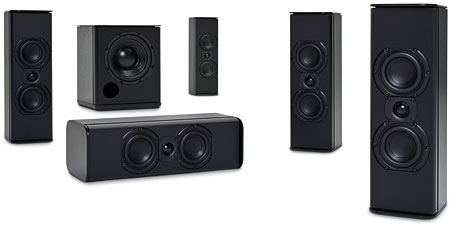Snell CR7 Speaker System
Heavy Metal Is Good

In 1976, the United States of America celebrated its bicentennial, and Peter Snell founded the loudspeaker company that bears his name.
Since then, Snell Acoustics has celebrated several milestones. In 1990, it offered the first THX-certified speakers under then- designer Kevin Voecks, who has since moved on to Revel. Changes in ownership came, including a sale to Boston Acoustics. Both brands joined D&M Holdings along with Denon, Marantz, McIntosh, and Escient. Since 2003, the chief designer for Snell has been Joseph D’Appolito, the father of the D’Appolito array.
Throughout its history, Snell has remained steadfastly rooted in Massachusetts. While other brands have moved their manufacturing offshore, Snell’s products are still designed and assembled in Massachusetts. That includes the cabinetry, although there are some hip Scandinavian drivers beneath the grilles. I had ample opportunity to relish Snell’s quality of construction during the years when I used a pair of the now long-gone J/IIIs, so I was intrigued at the prospect of sampling the brand’s home theater wares for the first time.
 Five Tall Ones
Five Tall Ones
The CR7 is an LCR speaker, so you can use it by itself as a vertical or horizontal center with similar timbre-matched Snell models, or you can use it vertically for the other channels. For this review, I used a fully matched set of five—my favorite speaker configuration and one I never get tired of recommending to readers. I placed all of them vertically to maximize the soundfield’s consistency.
At 18 inches in height, the CR7 is fairly tall. But its footprint is just 5.75 by 7.5 inches, so it’s slim and not intrusive. There’s no threaded insert or keyhole mount on the back, but the speaker comes with a wall bracket that slots into a back groove. Snell says it’s voiced to work with either wall or stand mounting; based on what I’ve heard, I’d say it’s especially well suited for wall mounting.
While the CR7 isn’t a fancy-looking speaker, its build quality becomes apparent as soon as you open the carton and lay hands on it. The enclosure is extruded aluminum with a good heft. Snell says this “preserves internal cabinet volume for better bass,” shaving 1.5 inches off each dimension. The speaker is rated down to 80 hertz, minus 3 decibels—see “HT Labs Measures.” Accordingly, I chose an 80-Hz sub crossover. The extremely sturdy nickel-plated binding posts look like pewter.
A curved aluminum grille fits into slots on the baffle. The fit is smooth but very snug, presumably to avoid buzzing and rattling. I repeatedly removed one grille to check various things. Unlike many other metal grilles I’ve handled, it never deformed.
Beneath the grille is a classic D’Appolito array, with a pair of 4-inch copolymer woofers flanking a silk-dome tweeter. People often criticize woofer-tweeter-woofer designs for their cancellation effects when placed horizontally. However, the designer notes that proper crossover selection provides even coverage plus or minus 20 degrees off axis, and that most listeners will not likely be seated 45-plus degrees off axis in a typical compact home theater setup. As with all Snell products, each speaker is individually tested and verified to operate within half a decibel of the master-speaker spec. This means crossover components are individually matched to drivers in each speaker.
- Log in or register to post comments



























































